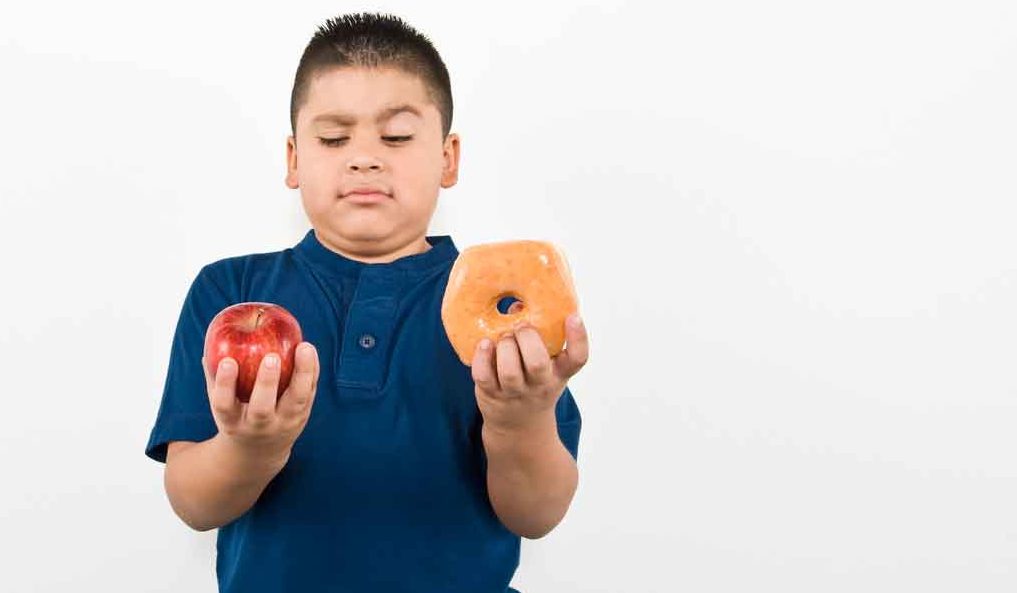Treating High Cholesterol in Children

Especially if your child is overweight, you need to encourage a diet that protects them against heart disease. Here's what you should know and can do.
High cholesterol in children
High cholesterol won’t make you feel ill, but it means there is too much of the wrong kind of fat in your blood. That fat can build up in the arteries leading to your heart, a condition called atherosclerosis. Although plaque build-up is usually attributed to aging, landmark studies have revealed fatty streaks in the coronary arteries of children as young as two.
If you catch the problem early, you can help your child stay healthy as an adult. The American Academy of Pediatrics recommends all children between the ages of nine and 11 have a simple blood test to check their cholesterol. They should be checked during future doctor visits as well.
YOU MIGHT ALSO LIKE: Why Don’t Americans Eat More Fruits and Vegetables?
Start after your child turns two, if you have a family history of heart disease, stroke, or high cholesterol. Your child’s doctor will also recommend early testing if your child or teen has type 2 diabetes or obesity.
A safe goal is a total cholesterol of less than 170 and an LDL of less than 110. About 7 percent of Americans ages six to 19 may have a problem, according to the Centers for Disease Control and Prevention. But that number is low, compared to other research.
In young people, high cholesterol is strongly linked to a diet heavy in saturated fat (usually from red meat or cheese), obesity, inactivity, and genes. Most kids with high cholesterol, also called dyslipidemia, have a parent with the same issue.
Should kids take statins?
The primary treatment for children with a low level of good cholesterol (HDL) is weight management through nutrition and exercise.
Treating high cholesterol in children, doctors say, can also help lower their risk of heart attacks and strokes as adults. Seven statins, a class of drugs millions of adults take for prevention, are approved for children and teens.
The case for statin therapy is strongest in children who inherit the problem from their parents. Therapy typically begins around the ages of eight to 10. In that group, research suggests, statin therapy can reduce a child’s cholesterol by 24 to 50 percent, depending on the drug type and dosage.
One meta-analysis showed that statins reduced total cholesterol, another measure of risk, by 25 percent, compared to a placebo. In a small study that followed children and teens treated with statins over time, only 1 percent had a cardiovascular event by age 39, compared to 26 percent of their parents.
The power of good lifestyle habits
Both children and adults with high cholesterol need to exercise and watch their diets.
It’s important to limit screen time, especially if you and your child tend to sit for hours and snack. Kids who watch more TV have more risk of heart disease. Lack of sleep is also a risk factor.
Don’t count on a child’s “baby fat” melting away with time. Helping your kids lose weight — or avoid more weight gain than appropriate as they grow — will protect them from a long list of adult problems, including type 2 diabetes, heart attacks, and strokes.
Snacking is okay, but not if it’s junk food. Keep apples, bananas, carrots, and celery at hand. You can also make meals with low-fat proteins, vegetables, and whole grains. Limit fried or fatty meats, cheese, and cookies and chips, all of which tend to contain a lot of saturated fat.,
The American Academy of Family Physicians warns against fast-food dining and urges families to exercise together. Help your kids develop a taste for biking and sports.
Updated:
October 24, 2023
Reviewed By:
Janet O’Dell, RN